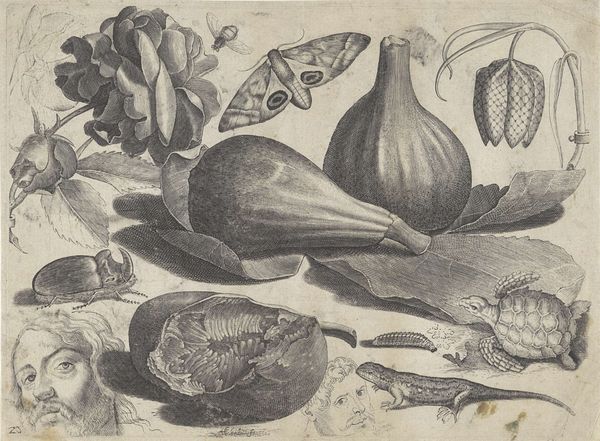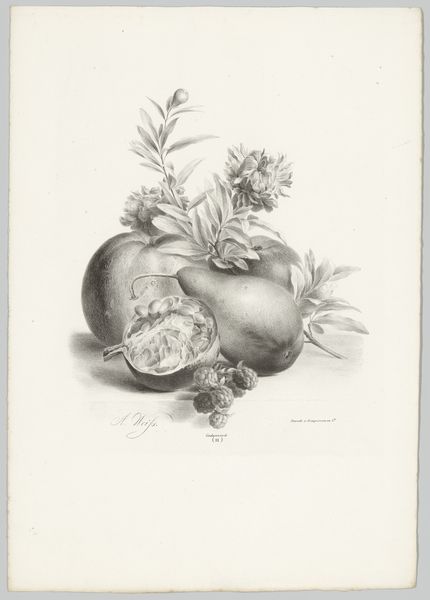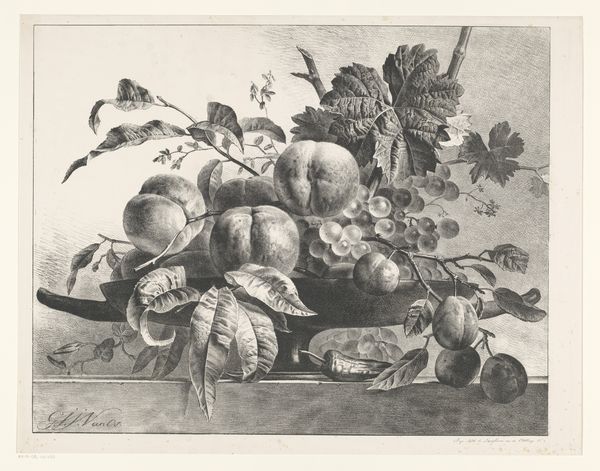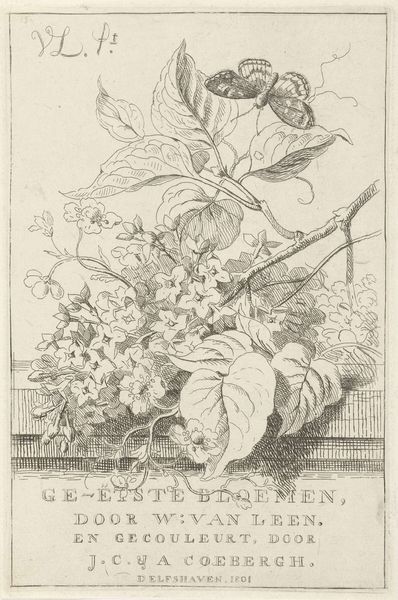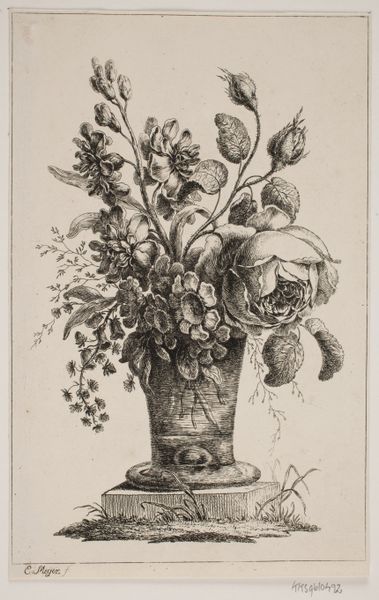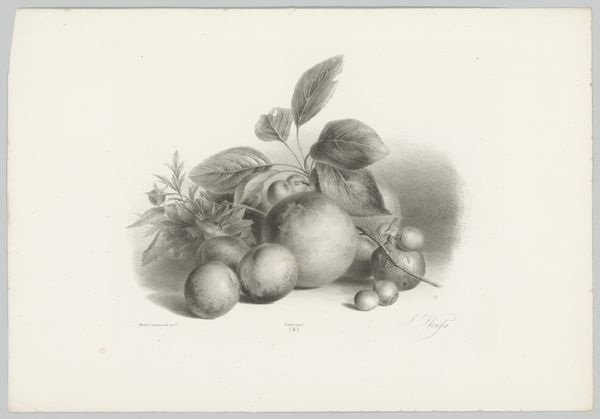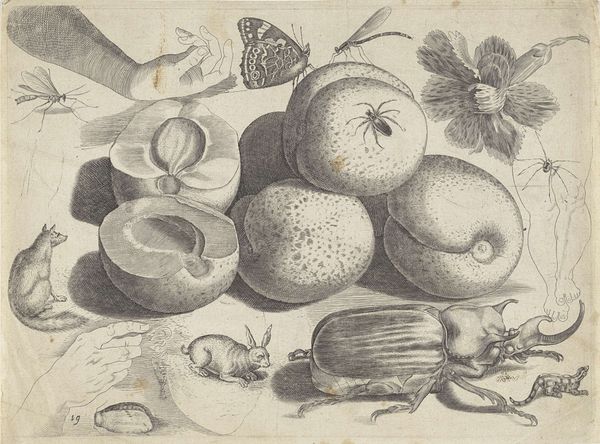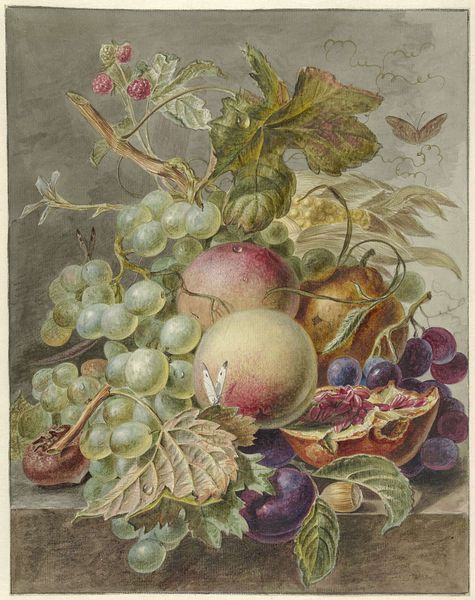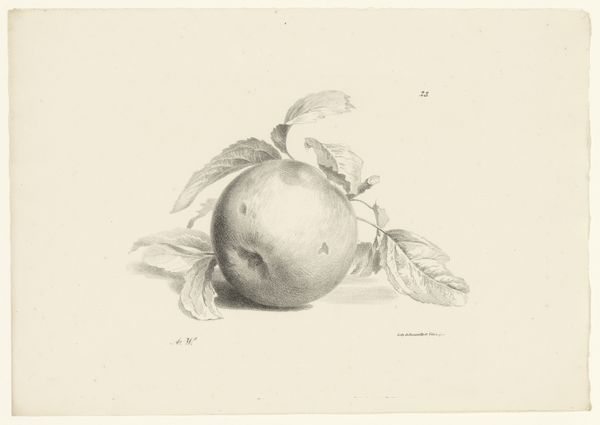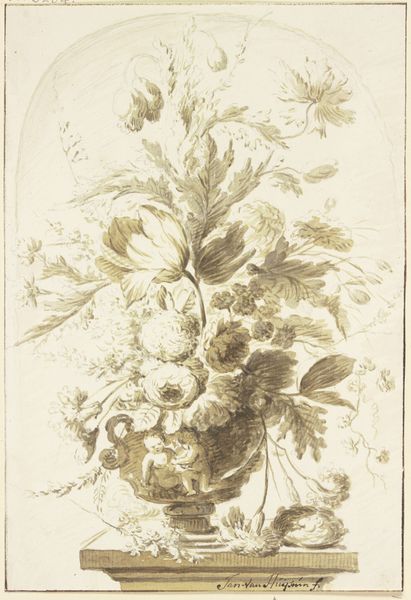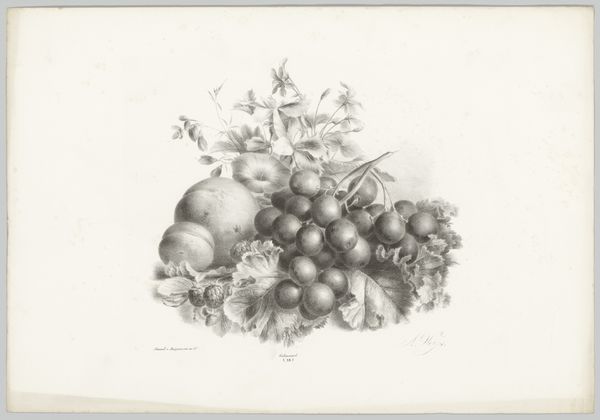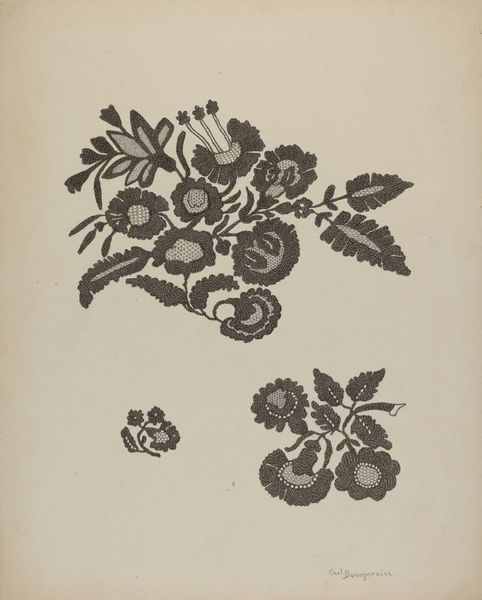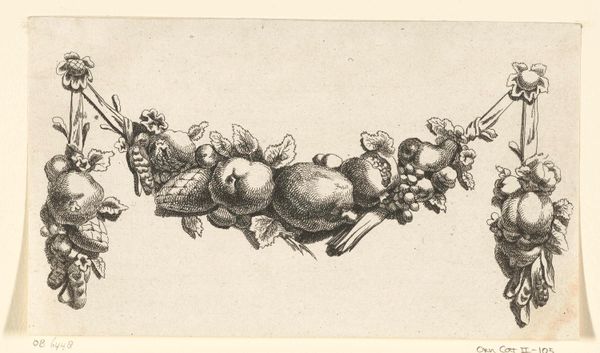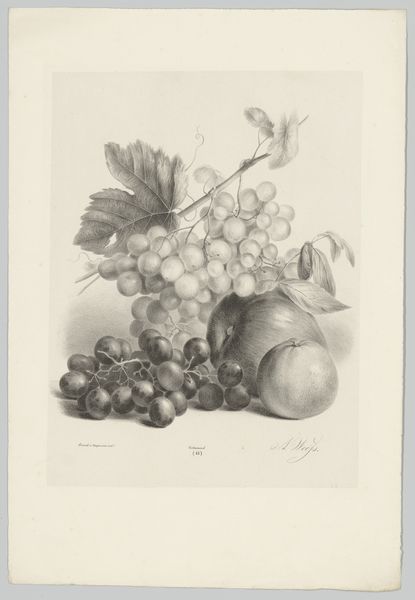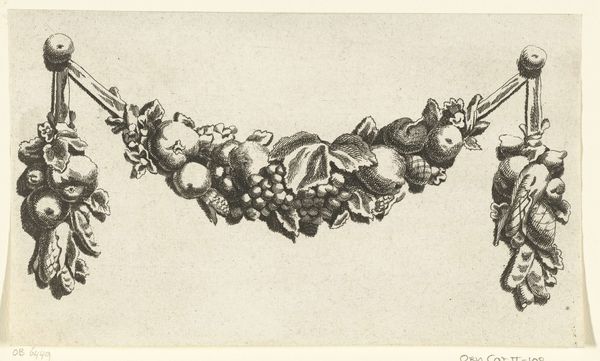
drawing, ink
#
drawing
#
pen illustration
#
ink
#
fruit
#
15_18th-century
#
line
#
realism
Dimensions: height 202 mm, width 150 mm
Copyright: Rijks Museum: Open Domain
Curator: It's quite delicate, isn't it? A certain lightness of touch...almost ephemeral. Editor: Indeed. What we’re looking at is a drawing titled "Vruchten en een tak met een vlinder," or "Fruits and a Branch with a Butterfly." It comes to us from the hand of Hermanus Fock and was likely created sometime between 1781 and 1822. The piece is rendered in ink, utilizing the fine, controlled medium of drawing. Curator: The starkness of the ink work really highlights the artist's linework, the variations in thickness to denote shadow and volume. I’m drawn to how economical the detailing is, it allows the fruits themselves to convey so much. It emphasizes their shape and texture rather wonderfully, doesn’t it? Editor: Absolutely. Looking closer, one has to consider the readily available resources for an artist like Fock at that time. Ink, being a relatively accessible medium, afforded a wide berth of artistic liberty to explore the nuances of still life subject matter within 18th-century artistic circles. The relative cost and effort of sourcing inks as compared to, say, pigments for full color works, means such pieces could act as sketches for other pieces, but also as complete works in their own right, showcasing craft skill without excessive materials. Curator: The butterfly lends a touch of drama to the static arrangement. The stark contrast of light and dark gives an almost… unsettling stillness to what would otherwise be a very classical composition. Does the choice of subjects and their arrangement perhaps reveal social attitudes to abundance, luxury or the fleeting nature of earthly possessions? Editor: The fruits may carry various symbolic meanings dependent on the social framework present when these were first received by his audience, each a comment on human impact in nature through its visual elements, and its use as commodity as the core foundation of these art markets. Was it initially viewed as botanical illustration? High art? Or something accessible, affordable to a wider circle of patrons than typical oil works on the time allowed? All viable avenues to interpret such piece’s intent. Curator: I see it! On a final note, the beauty in Hermanus Fock’s work is, without a doubt, how a medium so direct conveys layers of quiet contemplation. Editor: I agree completely. A beautiful piece that showcases artistry rooted in labor, materiality, and accessibility within the visual language available during its period of creation.
Comments
No comments
Be the first to comment and join the conversation on the ultimate creative platform.
